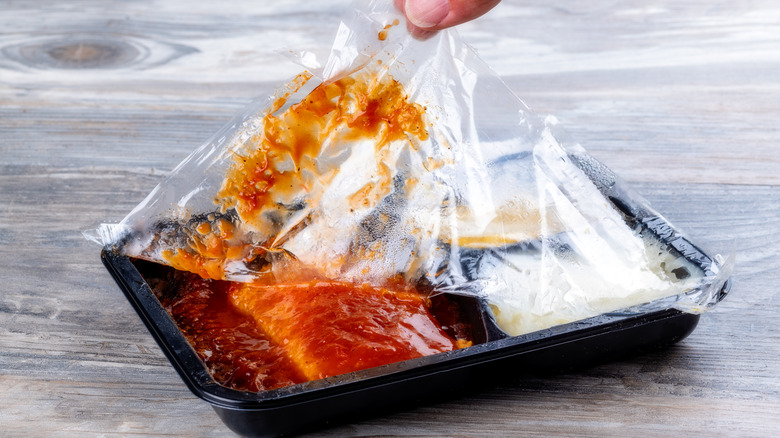What Was Included In The First TV Dinner?
TV or microwave dinners have long entered that food afterlife in which you can see them in the frozen aisle of the supermarket, but outside of the occasional YouTube video, you rarely hear about them. They no longer enjoy the same cultural cache they had in the 20th century or even in the early 21st. Part of this may be due to the decline of the microwave. According to Quartz, microwave sales peaked in 2004 and have since declined by 40%. A major factor was that the public deemed microwaved food as less nutritious. "As people become more health conscious, and more interested in cooking 'fresh,' that's not helping microwaves," John Owen, a senior industry analyst at Mintel, explained.
However, the frozen meal has had a bit of resurgence since the COVID-19 pandemic began its spread in the United States. A report commissioned by The American Frozen Food Institute in April 2020 noted that frozen meals were selling over 20% each week than they did a year previous, with the weeks around the beginning of the lockdown seeing 99% and 88% larger sales. The reasons were that more people were preparing food at home out of necessity, more people were stocking up on food in case of a supply chain emergency, and people wanted to make fewer trips to the store where they could potentially expose themselves to COVID-19. While the reasons were different, it turns out TV dinners also emerged from necessity.
TV dinners came from a mistake
While the early days of the pandemic saw people buying frozen meals that catered to all kinds of dietary preferences and restrictions, the first famous TV dinner was made to deal with a mistake. As the Orlando Sentinel wrote for the 65th anniversary of the TV dinner in 2018, a meat-selling company called Swanson had accidentally ordered too many turkeys in 1953. The plan was to buy a massive amount of turkeys because they would all be eaten for Thanksgiving. Except, come Black Friday, there were 260 tons of turkeys left.
Gerry Thomas, an executive at the company, noticed that American Airlines kept their meals contained in aluminum foil. So, he suggested that Swanson cut up and cook the turkeys and sell the cooked meat as pre-made meals. It was the marketing team that came up with the branding of a "TV Dinner."
As lovely as this story is, however, it overlooks the fact that there were frozen meals before TV dinners. According to the Library of Congress, the first frozen meal was made in 1945 by Maxson Food Systems for the purpose of catering to military and civilian air flights. In 1949, the meal made it to the home with Frozen Dinners, Inc. Within a year, that company produced 400,000 meals. Neither of these, however, managed to become iconic as a TV dinner and so don't receive the recognition.

